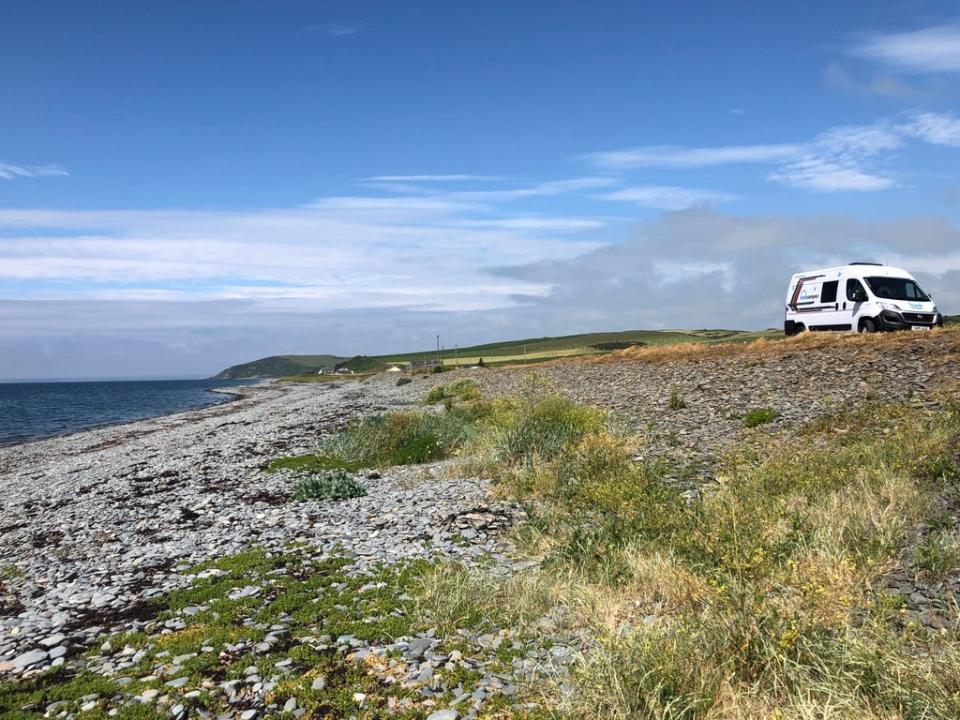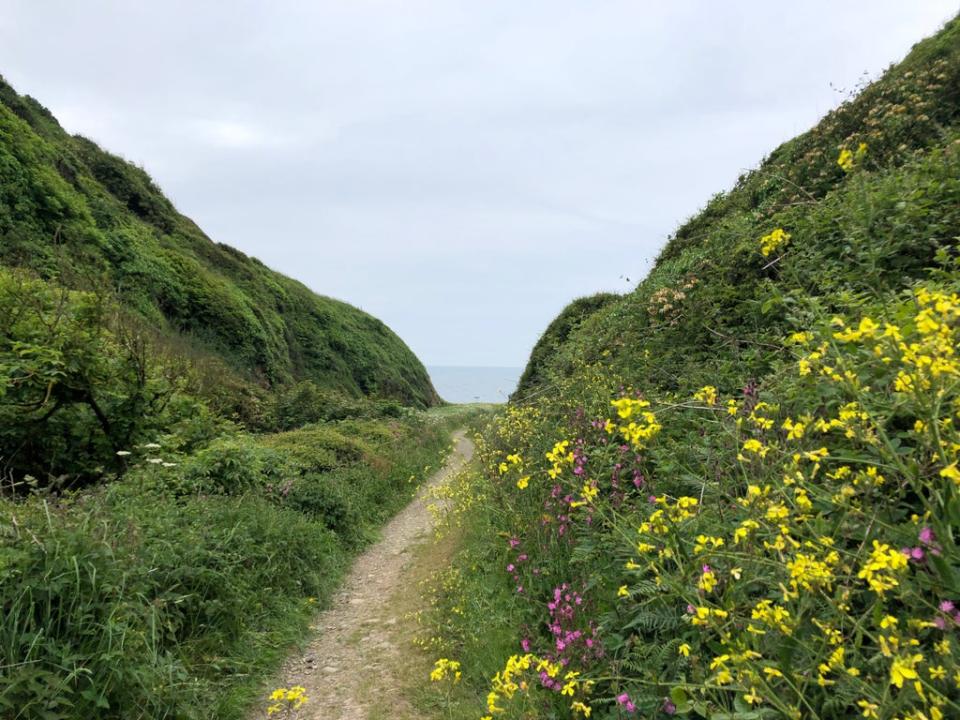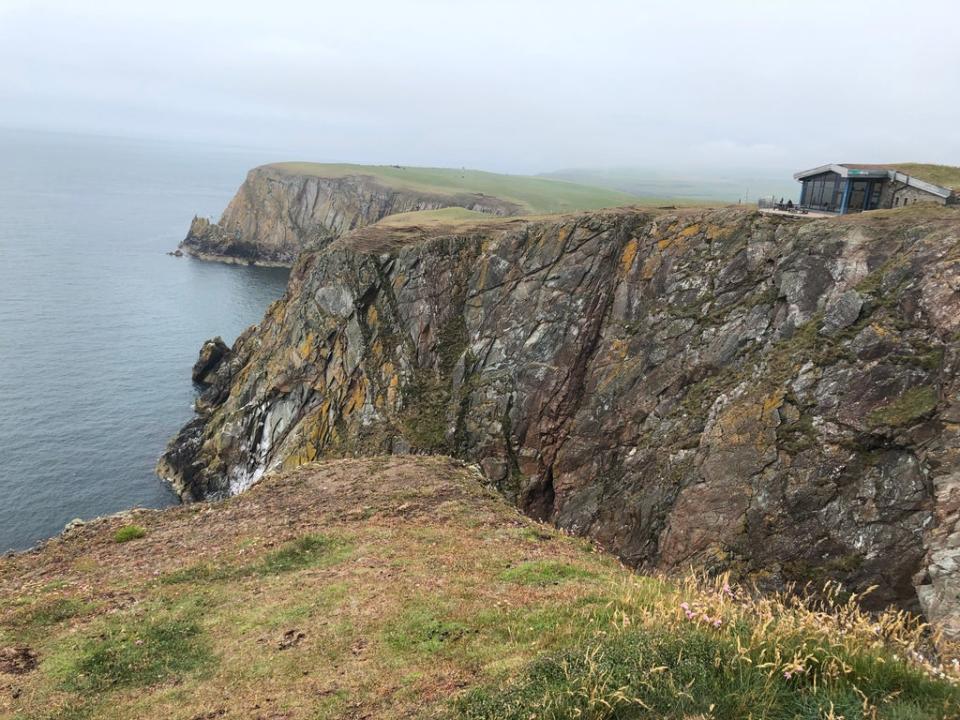South West Coastal 300: the idyllic Scottish road trip without the crowds

In the far south west corner of Scotland there’s a coastal road that ripples through a lush green landscape of rolling hills and working farms – you can drive for hours and the only traffic you might see is a tractor or a solitary motorhome parked up beside a pebble beach. The road meanders past castles and stately homes, romantic abbey ruins, whitewashed cottages and austere lighthouses; it travels over stone bridges spanning rivers and valleys and under dark skies made bright by stars.
The 300-mile circular South West Coastal 300 driving route takes in the birthplace (in Alloway) and place of death (in Dumfries) of Scotland’s National Bard Robert Burns – as well as sites connected to St Ninian, Robert the Bruce and J M Barrie – but it doesn’t have the big hitting destinations found elsewhere. In fact, it’s an ideal route if you’re happy to forgo Scotland’s most crowded attractions in favour of solitude and the great outdoors.
Lockdown restrictions in Scotland have eased, but some visitor sights along the route remain closed and others ask that you book entry tickets in advance, so it’s worth checking ahead online.
How long does the SWC300 take to drive?

It’s perfectly possible to tear around the 300-mile route in four days, but you’d be missing out on the rest and relaxation that the region does best. Don’t underestimate how winding and narrow some of the roads are – it takes longer to drive than the satnav will have you believe. It takes a week minimum and two weeks if you’d like to spend time hiking, sailing, cycling and playing golf – or simply lazing on the beach. The route circles the UK’s largest forest and, if you have time, there are a couple of additional forest drives to tackle: six-mile-long Carrick Forest Drive (closed 2021) and 10-mile-long Raiders’ Road Forest Drive (open to cars April-October).
Where are the best beaches?
Both Ayrshire and Dumfries & Galloway have gorgeous coastlines, though it’s the latter, along the Solway Firth, that’s been labelled the “Scottish Riviera” – on clears days, views from these south-facing sandy beaches take in the Isle of Man and Cumbria. In Ayrshire, bucket-and-spade beaches include Ayr and Troon, and there’s also pretty little Dunure Beach. In Dumfries & Galloway, make a beeline for Sandhead Beach (Luce Sands), Rockcliffe (there’s a lovely coast and woodland walk from here to Kippford, or follow the coastal path east to Sandyhills), or visit neighbouring dune-backed Powillimount and Southerness beaches.
What about the best green spaces?
Here, where the country roads are lined by rhododendrons and ancient trees that nod towards each other across the asphalt to form a shady tunnel, there’s no end to the gardens, woodlands and wetlands you can visit. Galloway Forest Park, Scotland’s first Dark Sky Park, is home to two of the best mountain bike centres in the UK, as well as all things red: squirrels, deer and kites. In the summer months at Logan Botanic Garden and Castle Kennedy Gardens, the air thrums with bees, and at Caerlaverock Wetland Centre it’s all butterflies and dragonflies. Finally, a little off the main route near Moffat is Grey Mare’s Tail Nature Reserve, with its rare upland plants and waterfall reached via a pretty tough going walk.
And the best viewpoints?

You’ll be pulling off the road at scenic viewpoints signposted all along the route, but for eye-popping views, you can’t miss the Mull of Galloway. Scotland’s most southerly point is craggy and windswept and you can watch as birds swoop over the rich waters of its tidal meeting point – from the clifftop cafe you might also spot porpoises, dolphins and seals, or even whales. Other classic views include Alloway and the River Doon from the Brig o’ Doon – the cobblestone bridge made famous in 1790 by Burns’s Tam o’ Shanter poem – and from the rocky promontory of Culzean Castle towards the Isle of Arran. If you’re seeking serenity, look no further than South West Scotland’s lochs. Loch Doon in the north of Galloway Forest Park and Clatteringshaws Loch and Loch Stroan in the south are the kind of remote viewpoints where you can sit in stillness and stare all day.

Where to stay on the SWC300
The route is dotted with service towns and villages – Ayr, Stranraer and Dumfries are probably the best known and biggest, but Portpatrick (with its harbourside pubs), Kirkcudbright (pronounced kir-coo-bree and known as the “Artists’ town”) and Wigtown (Scotland’s National Book Town) are smaller and more welcoming places to stay. Wild camping is allowed in Scotland and you’ll discover plenty of pristine remote places where you can park up or pitch up, though New England Bay Caravan Club Site and Solway View Holidays are stupendous sites with facilities.
Getting there
Campervan hires are plentiful in Scotland - I rented mine from Bunk Campers, which has a wide selection of 2-6 berth campervans and motorhomes from VW Campervans to apartment style motorhomes. The Aero, which sleeps two, costs from £60 per day or £180 for three nights off season, based on picking up and dropping off in Edinburgh.
Read More
How community spirit turned Leeds into a foodie hotspot
Exploring the Kintyre 66, Scotland’s not-so-long and winding road
How Folkestone has totally transformed since my childhood #hometowns
Why Penrith is much more than a pit stop on the way to better things #hometowns
Why I can never escape Brixton’s evocative contrasts #hometowns

 Yahoo News
Yahoo News 